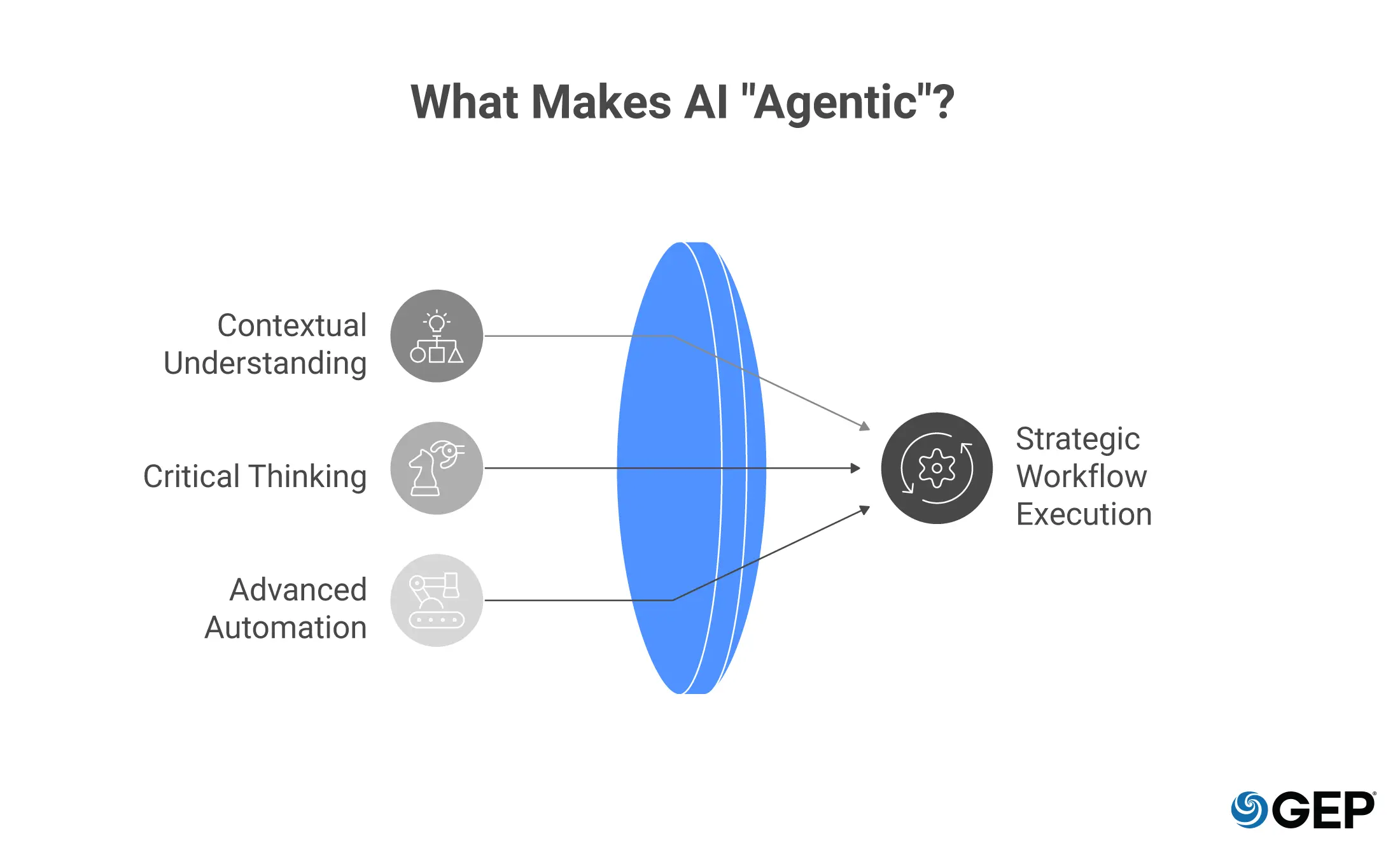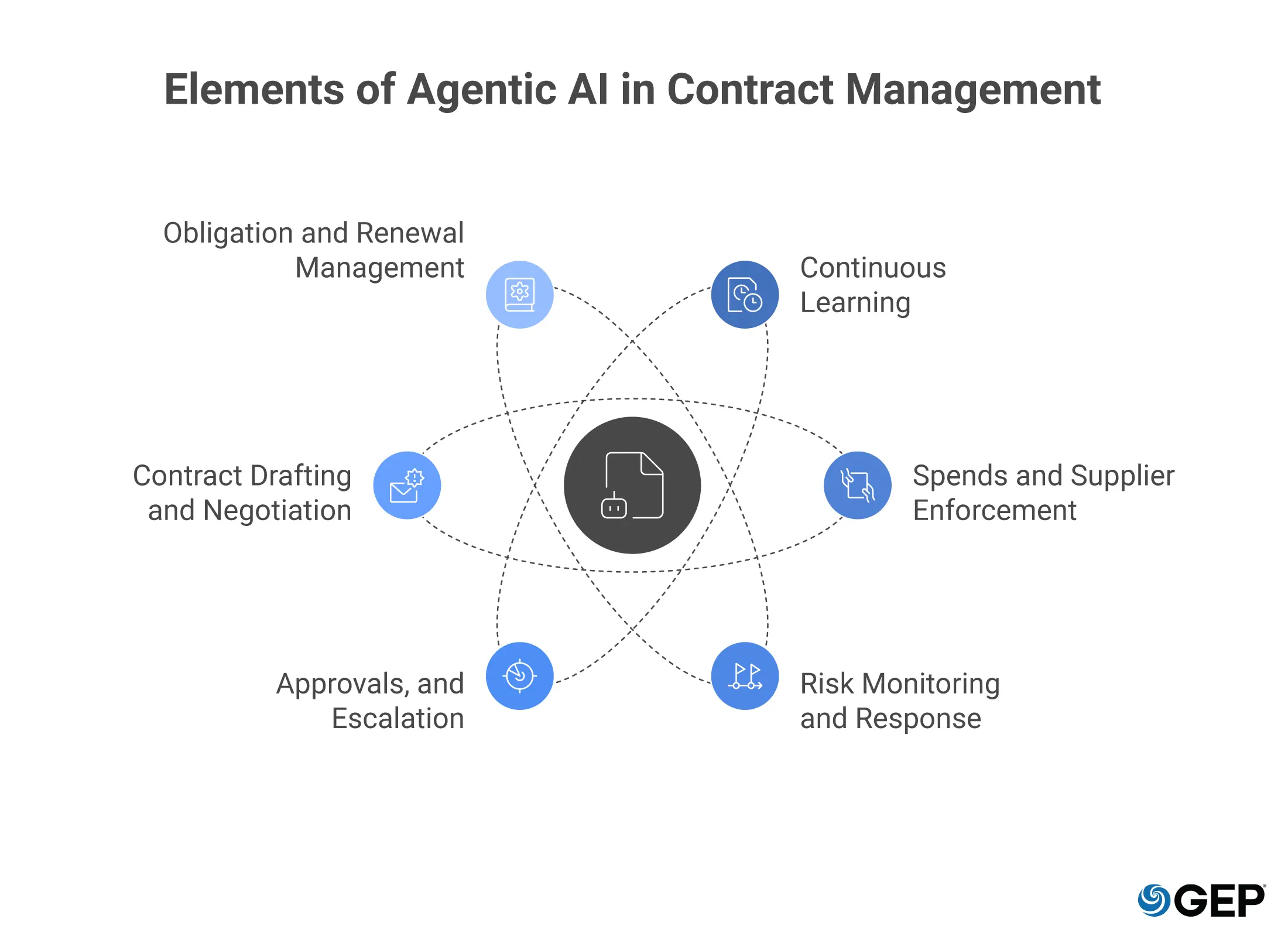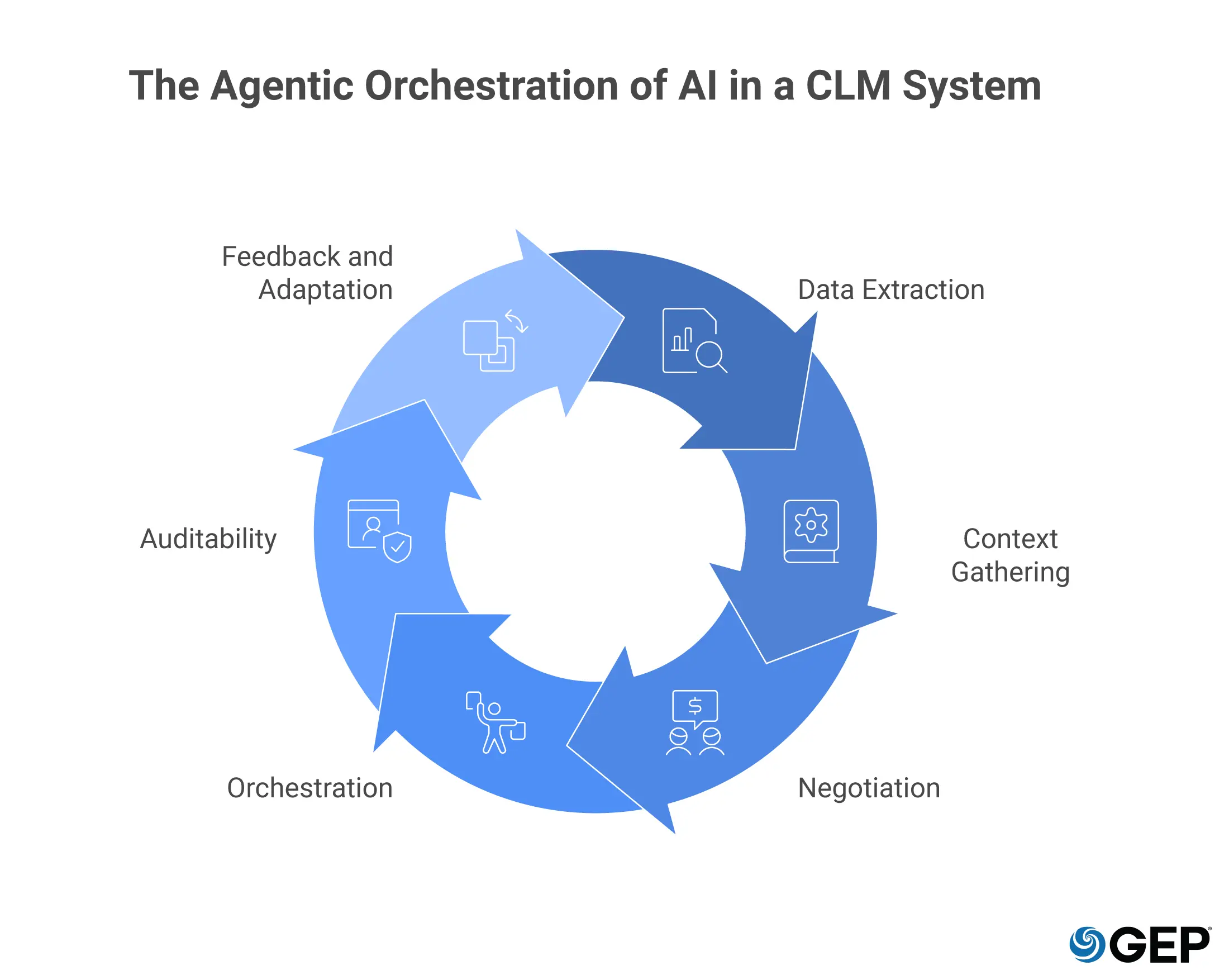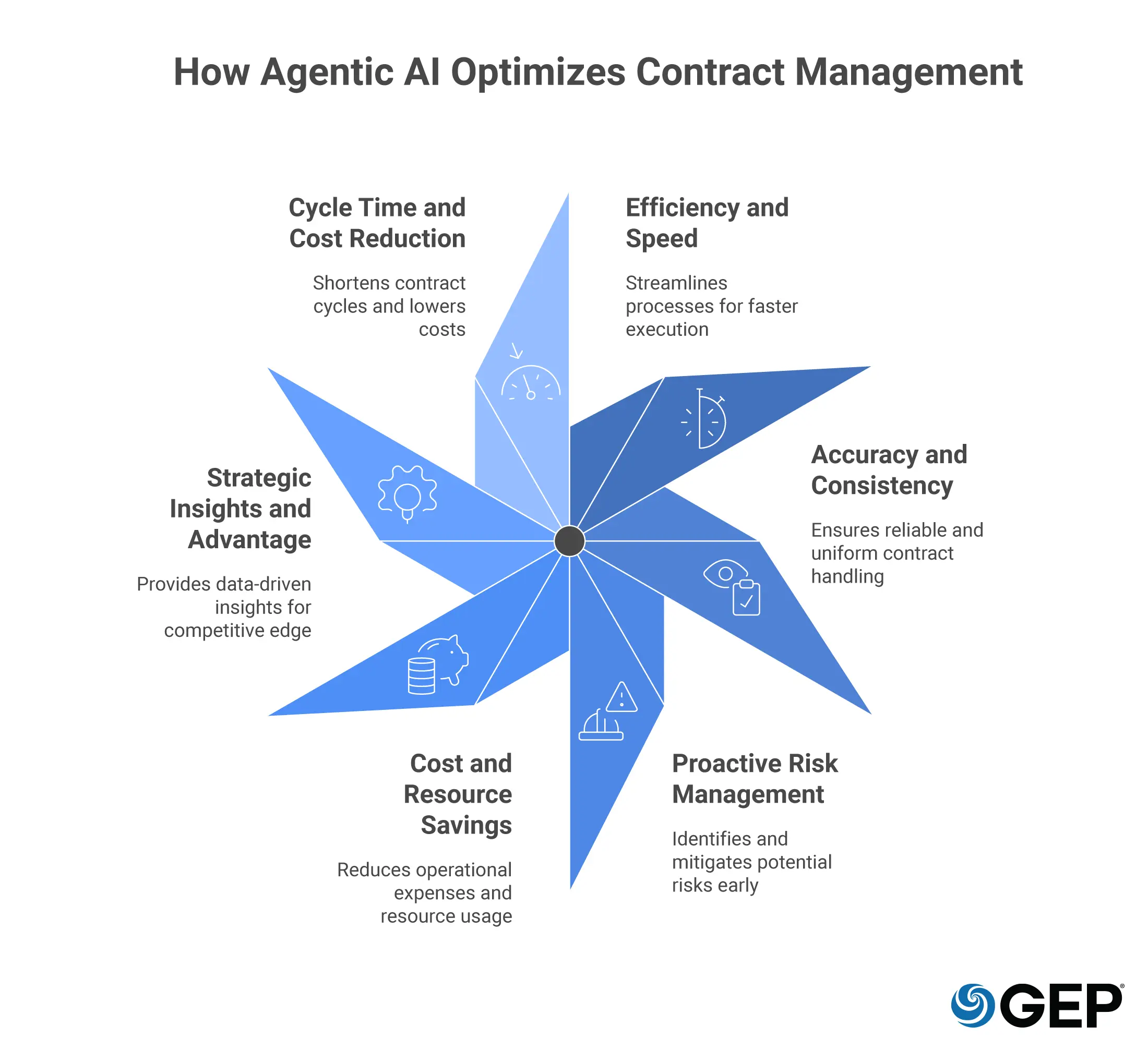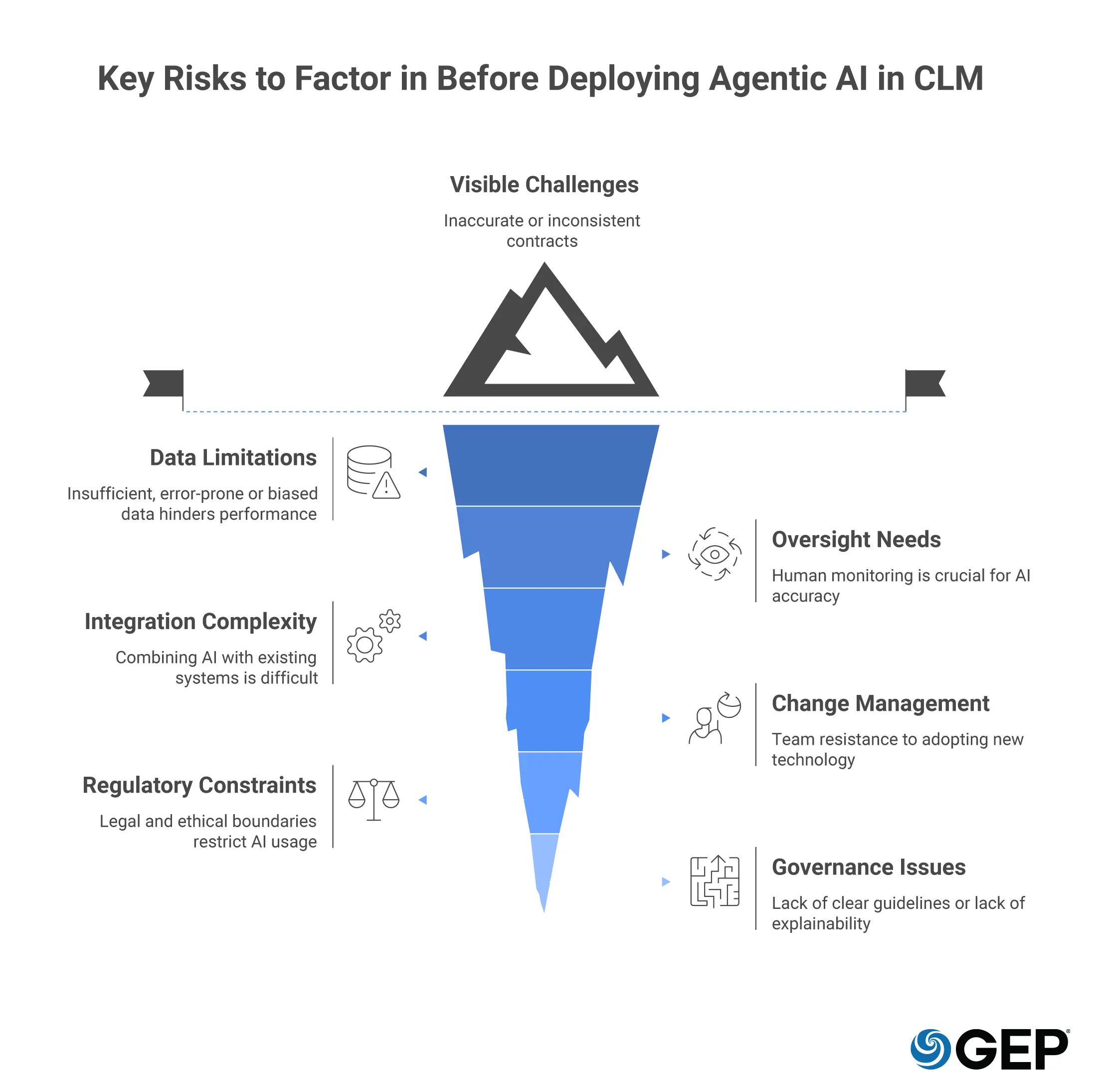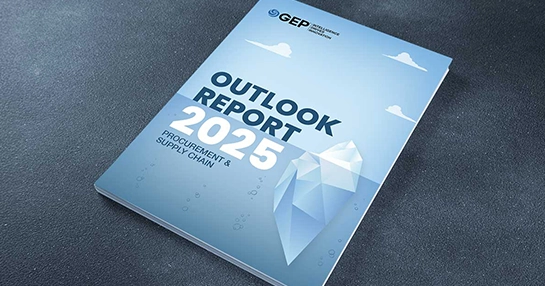
How Agentic AI Works in Contract Lifecycle Management (CLM)
- Agentic AI plans, acts, and adapts in real-time, gathering context across the entire contract lifecycle.
- It operates across all procurement functions to orchestrate workflows.
- Success relies on consistent training built over clean data and strong guardrails.
October 08, 2025 | Contract Management 7 minutes read
Every contract has a lifecycle. Too often, parts of it get lost. Agentic AI in contract management acts autonomously, with consistency and context built into every step.
Agentic AI understands context and executes complex workflows strategically. It is equipped with a “critical thinking” capability that was never seen before in traditional rule-based automation and narrow AI systems.
This article explains how agentic AI applies to contract management and to what extent it can be used in CLMs. And as always, you will also find benefits and risks associated with it.
Talk to Our Expert
Agentic AI in Contract Management: What Does It Entail?
Contracts stay aligned with live business data and market signals. Agentic AI manages them end-to-end, from tracking milestones and budgets to enforcing compliance and initiating the relevant workflows.
Obligation and Contract Renewal Management
Agentic AI watches timelines without losing track. When a contract renewal is coming, it checks compliance and prompts the next step, which may be extending the agreement or renegotiation. The agreement might be closed if neither choice works. You set the rules once, and the system keeps them in play.
Along the way it extracts obligations from contracts and indicates which ones deliver value or are underperforming. This gives you room to act while time’s still in your favor.
Contract Drafting and Negotiation Support
First drafts don’t start from zero anymore. The agent pulls language from past deals and inserts clauses that fit the situation when drafting contracts. It can also analyze contracts and flag deviations from your playbook and suggest targeted edits.
It can also negotiate or suggest recommendations to optimize targets. The redlines get better over time as the system learns what you accept and what you don't.
Consistent Workflows, Approvals, and Escalation
Agentic AI automatically embeds approved prices, clauses, and terms into catalogs or buying systems, ensuring purchases stay compliant and negotiated savings are realized.
Here, you have the option to include a human approval layer. The agent will then route contracts based on rules—for example, by contract size, region, or contract type. If something stalls, it follows up until the step is cleared or escalates according to policy.
Risk Monitoring and Response
Risks don’t arrive politely, nor are they confined to just one function of procurement. Depending on the type of risk, specific AI agents are called, and AI compares those signals to internal data, policies, and other metrics that score risks and alert stakeholders accordingly.
This is also where agentic AI shines, as it integrates with other systems like risk monitors, cost controllers, security systems, etc., to always know when a threat is looming around the corner. It gives procurement teams an early warning to renegotiate existing clauses, find new suppliers, halt execution, or revisit current sourcing plans.
Maverick Spends and Supplier Enforcement
Off-contract spending is a slow leak that adds up fast. The system tracks slips, reroutes orders toward approved suppliers, and applies the negotiated discounts automatically.
If someone strays, the agent suggests the contracted option and shows the real cost difference. It enforces discipline without slowing people down. It updates supplier profiles based on real-time data, so the next alert is usually sharper.
Continuous Learning
Every task that the system handles becomes part of its training. Over time, this leads to fewer corrections and stronger AI recommendations that are in line with the organization's procedures.
How GEP Ranked in Gartner®’s Contract Life Cycle Management 2025
The report evaluates 17 vendors for 13 CLM capabilities. Discover how GEP was positioned in the Magic Quadrant™.
How an Agentic CLM System Works
In a contract lifecycle management (CLM) platform, agentic AI is embedded across layers so the system can interpret data, make decisions, and act with little input from you.
Data Extraction
The process begins when the system parses contracts and supporting documents. It extracts detailed elements such as clauses, obligations, dates, and parties, then builds a structured knowledge base for each agreement.
Context Gathering
AI maps dependencies between clauses, obligations, approvals, and procurement systems like ERP, CRM, etc. By reviewing project details, supplier profiles, and past contracts, it builds the context needed to act in line with your business.
Autonomous or Semi-Autonomous Negotiation
Agents propose redlines, highlight trade-offs based on prior outcomes, and can even handle parts of the negotiation within thresholds you set. You still guide the boundaries, but the agent moves routine exchanges forward and leaves the final judgment in your hands.
Control Towers and Orchestration
Procurement or supply chain control towers let you manage everything from a central point. You see information flow through and can track ongoing processes in real-time.
Auditability and Rule Guardrails
Enterprise-grade agentic CLMs include rule engines, approval gates, immutable logs, and explainability features that satisfy legal and compliance teams. This way, you can be sure that encoded business rules bind all actions.
Feedback and Adaptation
After actions are carried out, the results flow back into the system to better align with your company’s standards over time. The AI agent learns which proposals were accepted, how humans edited drafts, and which workflows met their goals.
Agentic Decision Orchestrator
Agentic AI manages the lifecycle of specialized AI agents used for drafting, negotiation, renewal, compliance, etc., and orchestrates everything into a final workflow. It sequences steps, manages timeouts, retries failed actions, and coordinates communication across agents.
At the core sits a large language model (LLM) that uses methods like retrieval-augmented generation (RAG) and knowledge graphs. These enable it to compare contract terms against internal policies and past outcomes. For instance, it may consult your corporate playbook to judge if a clause is acceptable or pull examples from past contracts to guide a recommendation.
Together, these layers make the CLM adaptive. And the agentic CLM sharpens decision-making the longer you use it.
Benefits of Agentic AI in Contract Lifecycle Management
Agentic AI makes contract management faster, smarter, and more reliable by automating the heavy lifting and keeping every agreement tied to company objectives. Here are the key benefits procurement leaders can expect:
Efficiency and Speed
Agentic AI in contract lifecycle management (CLM) cuts down cycle times by automating tasks like drafting, reviewing, and tracking. Analysts note it can shorten contract timelines by half or more, giving you faster results without extra effort.
Accuracy and Consistency
You get uniform results because agents apply corporate standards the same way every time. Routine reviews can exceed 90% accuracy, and clause libraries ensure agreements stay aligned with policy.
Proactive Risk Management
The system monitors contracts in real time, so issues are flagged early. You see alerts for expiring terms or possible breaches before they become problems. This kind of foresight reduces surprises like missed renewals or overlooked liabilities.
Cost and Resource Savings
By handling the tedious work, agentic AI gives lawyers and procurement specialists more time for strategy and complex negotiations. Staff spend less effort on grunt work and more on areas that drive value, which improves productivity and morale.
Strategic Insights and Advantage
Analytics built into agentic CLM platforms guide better strategy and give early adopters a competitive edge. In large enterprises, even small gains in speed or compliance can translate into millions saved.
Cycle Time and Cost Reduction
You see faster drafting, fewer manual reviews, and automated renewals. The result is shorter procurement cycles and lower legal and operational costs.
Challenges and Risks of Using Agentic AI in Contract Management
Agentic AI brings capability, and it brings risk. You should approach deployment with a program-level plan that treats data, governance, integration, and legal controls as first-order priorities.
Data and Model Limitations
A well-trained system goes a long way. But simulations fail when inputs are sketchy or the training data is terrible. LLMs can also struggle with very long or poorly structured contracts. Safe operation depends on high-quality, granular, labeled contract data and ongoing validation of every output.
Need for Oversight
These agents can act on their own, but you can’t remove human judgment. Misread clauses or fabricated language could trigger policy conflicts. High-stakes negotiations, exceptions, or legal calls still need a human expert in the loop. Clear escalation procedures are essential: when an agent hits ambiguity or goes off-plan, it should pass control back to you.
Complex Integration
Implementing an enterprise-wide rollout is never simple. The AI has to tie into ERP, S2P, paywalls, and supplier systems, all without leaking sensitive data. You need strong cybersecurity and compliance checks from day one. Early pilots often hit bumps, and integration drags.
Change Management
Building trust takes time and effort. People hesitate when software “negotiates” for them, and ROI isn’t obvious at first. This is why explainability is important. It helps clarify the reasons behind the AI's decisions. Training helps, too, but the real win comes when staff see the system catch issues before they do.
Regulatory and Ethical Constraints
Every automated action must follow laws and corporate policies. If an agent mistakenly accepts a sanction violation or an unenforceable clause, liability rests with the business. Legal oversight and the ability to freeze or veto agent decisions act as guardrails.
Governance and Explainability
Scaling agentic AI requires clear audit trails, explainable actions, and role-based access controls (RBAC). Every action must be logged in for future reference. Agentic AI adapts as conditions change, so contracts stay aligned with business goals.
Summary
Today’s CLM platforms can create, store, retrieve, and extract data on their own. Based on predefined rules and workflow automations, they can tag contract types, flag anomalies, route escalations, and self-monitor performance over time. These intelligent systems speed up contract review and improve accuracy, taking much of the routine work off your team’s plate.
If you want faster cycles, fewer mistakes, and a proven way to unify source-to-pay, get a demo of GEP’s Intelligent Contract Management Software
